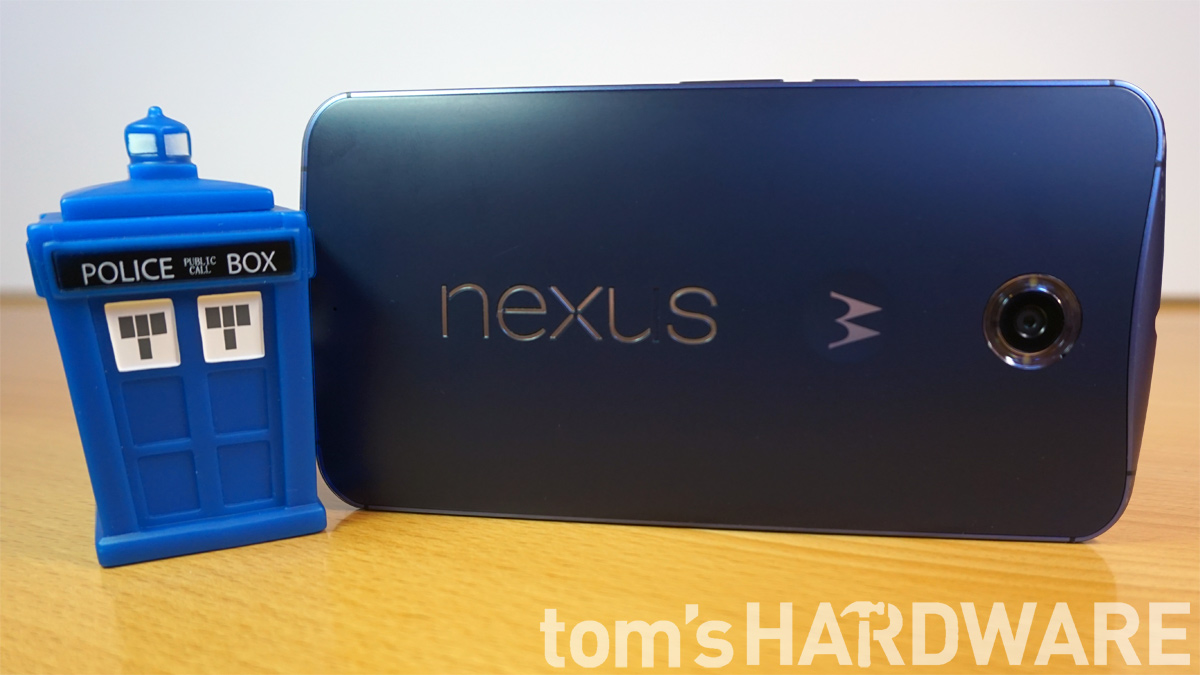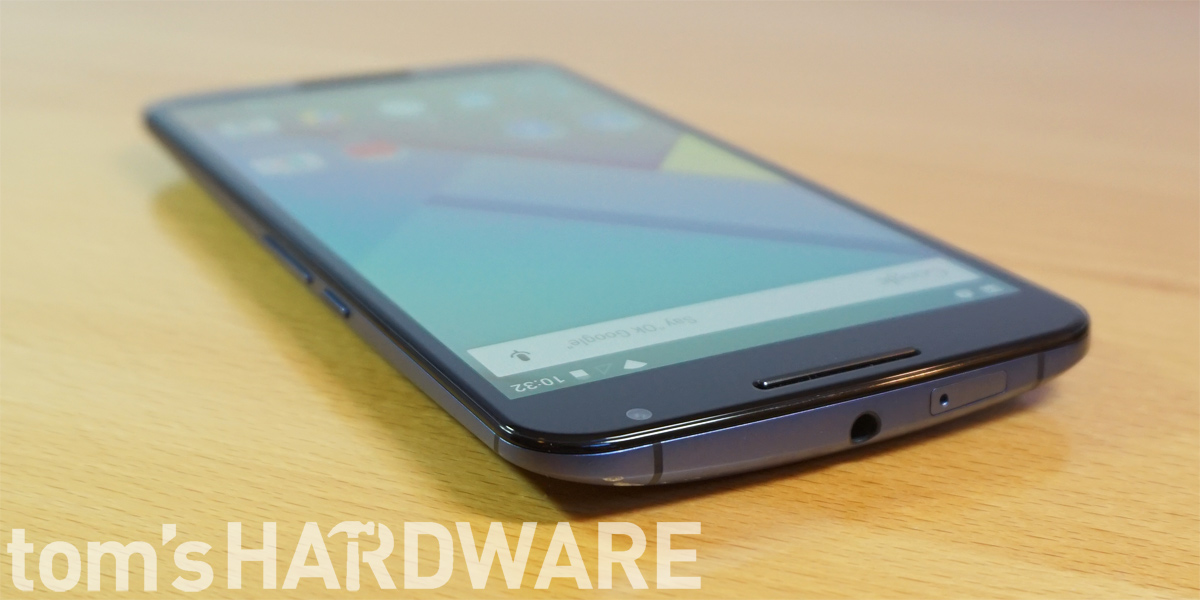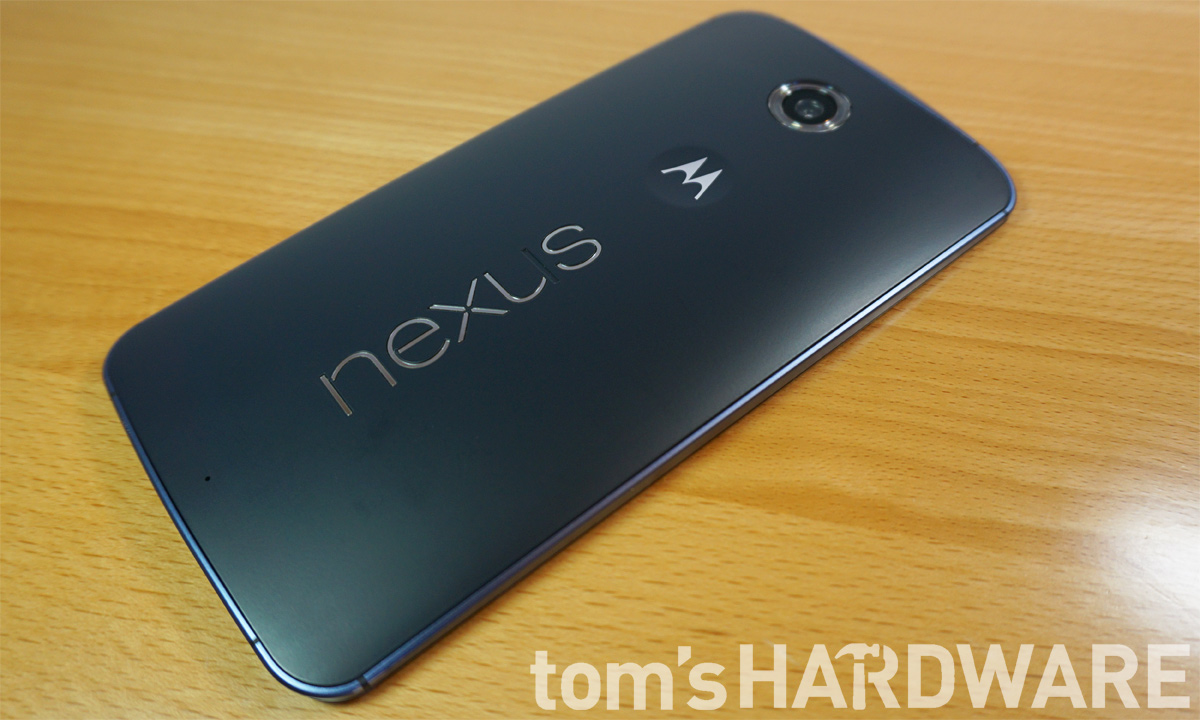Google Nexus 6 Review
Why you can trust Tom's Hardware
Conclusion
Recent Nexus devices have delivered great value, offering flagship hardware at mid-range prices. In order to reach the lower price point however, some compromises had to be made. For the Nexus 6, Google chose to go in a different direction, eliminating the compromises and the value. With a starting price of $650, it must compete with the other expensive flagship phones on pure performance and user experience. Based on the history of the Nexus brand and Motorola's input, we had high hopes for the Nexus 6.
One of the primary draws for any Nexus device is getting the latest pure Android experience. Lollipop brings a redesigned interface and a new Java runtime environment, among many other improvements, to this Nexus. The clean look of Lollipop's Material Design language is a refreshing change, as is the improved functionality of the lockscreen. There's now a proper do-not-disturb mode, and the profile feature previously available on tablets is now available for phones too. The scrollable recent apps menu works great until too many open apps accumulate, which makes it difficult to locate the one you want. There's also no way to just close all apps at once, definitely a UI oversight.
Ambient Display is a simple but excellent addition to the Nexus 6. It basically eliminates the need to hunt for the power button. If the phone is sitting on a table, simply rocking it on its curved back shows the time and notifications with minimal power draw. Picking up the phone or taking it out of your pocket will do the same. It's really a great convenience feature.
Drawing design inspiration from Motorola's Moto X, the Nexus 6 is an attractive, well-made phone. The combination of aluminum and plastic strikes the right balance between rigidity and weight, both extremely important in such a large device. While we like having the power and volume buttons on the same side, a little more space between them would make them more distinguishable and easier to operate, but this is a minor quibble.
The lack of a removable battery and microSD support are more serious offenses. With the Nexus 6, you're limited to a maximum of 64GB of storage. That's enough for many road warriors, but not all. Having the battery sealed inside will eliminate this Nexus from many people's wish list, though some will find solace from the Qi wireless charging and the included power adapter that supports Qualcomm's QuickCharge 2.0 technology that gets you from near-dead to over 20% in only 15 minutes.
After living with the Nexus 6 for awhile, we can say that the initial misgivings about its size dull. Yes, nothing changes the fact that its dimensions can be inconvenient, and it can be difficult finding places to stash this beast. However, by minimizing the bezels around the screen, it's really not much taller than the iPhone 6 Plus. Its significant width all but eliminates one-handed use, though.
This brings up one of our pain points. The Nexus 6 lacks any phablet-specific software features that make it easier or more productive to use: no special stylus features, no one-handed modes and no multi-window capability. Since stock Android does not offer any of these large-screen enhancements, why use a phablet as Lollipop's showcase device?
Get Tom's Hardware's best news and in-depth reviews, straight to your inbox.
Existential questions aside, the Nexus 6 is packed with high-performance hardware, including the Snapdragon 805 SoC. The Adreno 420 GPU, along with copious amounts of memory bandwidth, showed greater than 50% improvement over the previous-gen Adreno 330 in several of our tests. CPU performance was not nearly as impressive, its bump in clock rate offering barely tangible gains over the Snapdragon 801 while consuming more power. We did find that the Nexus 6 was less prone to thermal throttling than the Galaxy Note 4, which also uses a Snapdragon 805 SoC.
Google's decision to enable Android's Full Disk Encryption (FDE) is terrific for security. Unfortunately for the Nexus 6, it's not capable of performing the file encryption/decryption in hardware. The end result is a drastic reduction of the internal storage performance. While the use of a RAM cache will mitigate the impact somewhat, apps take longer to load on the Nexus 6 versus its competitors.
We found the audio experience on the Nexus 6 to be pleasantly surprising. The dual, front-facing speakers have enough separation on a six-inch device to provide a decent stereo effect. Driven by powerful amplifiers, they get seriously loud without garbling the sound with distortion. The positive sonic experience carries over to the headphone jack, which is nearly indistinguishable from an iPhone or Z3.
Unfortunately, the Nexus 6's camera performance is merely OK. With good lighting, it captures images with plenty of detail and proper exposure. White balance is generally good, although we did notice a slight blue shift in some cases.
It's when the light dims that camera performance fades. The Nexus 6 fails to utilize OIS to improve low-light performance, producing darker, noisier images than competing cameras. The iPhone 6 Plus, for example, uses OIS to hold its shutter open three times longer than the Nexus 6, holding a much lower ISO and minimizing noise. It's not clear if the Nexus' camera software just is not optimized to work with OIS or if the feature is not actually enabled.
The 5.96-inch AMOLED display is both the Nexus 6's most distinguishing feature and its biggest disappointment. Lacking a proper sRGB display mode and not performing any screen calibration is unacceptable in this price tier. Even the $150 Moto E comes with a decent-looking, calibrated screen. The overly saturated neon colors will degrade the user experience for many people.
Considering the uncalibrated screen, missing OIS, slow internal storage and outdated graphics driver, we can't help but feel that the Nexus 6 was rushed to market. The good news is that these problems can be fixed with software updates. In fact, the Android 5.1 update includes a new graphics driver and improves the storage read performance, at least somewhat (see how the Nexus 6 performs with Android 5.1). The bad news is that the screen and OIS issues persist. The Galaxy Note 4 offers equivalent or better hardware and phablet-optimized software, making it a more compelling choice. However, if you want a large phone, don't mind the vivid colors and prefer getting your software updates directly from Google, the Nexus 6 is your beast.
Update [11:45 5/17/2015]: Added a link to our article that discusses the Nexus 6 specific changes made in the Android 5.1 update, including a thorough performance comparison.
William Van Winkle is a Senior Contributing Writer at Tom's Hardware. Contact him as williamvw on the forums and follow him on Twitter @copywriterWVW.
Matt Humrick is a Staff Editor at Tom's Hardware, covering Smartphones and Tablets. Contact him as MobileEditor on the forums and follow him on Twitter @digitalOut_net.
Follow us @tomshardware, on Facebook and on Google+.
MORE: All Smartphone Articles
-
MobileEditor ReplyWhy wasn't the S6 used in this comparison?
Primarily because of the difference in screen size. If someone is considering a 6-inch phone, they probably are not interested in 5-inch phones. Thus, we compared it to other devices with a 5.5-inch or larger screen (and the Nexus 5 just because it was the previous generation).
- Matt H. -
Desertlax I think there is a typo about price, the nexus 6 is listed as 649 and 699 on the play store, not "starting at $750".Reply -
Tanquen I don’t know if Google lowered the price or when but it’s been $649 for the last week or so that I’ve been thinking of buying it. So I don’t get the repeated complaint that the price is $750 and too high. ???Reply -
MobileEditor ReplyI think there is a typo about price, the nexus 6 is listed as 649 and 699 on the play store, not "starting at $750".
Thanks for pointing this out. The article has been updated to reflect the current pricing.
- Matt H. -
Stryfex Did I hit my head and go back in time by like 6 months? Why is toms hardware posting reviews of the Nexus 6?Reply -
rtfizzel The Nexus 6 camera does have OIS. At least it is listed as a feature by Google and many other reviews.Reply
https://www.google.com/nexus/6/ -
rtfizzel My bad, misread. Apologies.ReplyThe Nexus 6 camera does have OIS. At least it is listed as a feature by Google and many other reviews.
https://www.google.com/nexus/6/ -
Chillyblue I have owned my N6 since it came out. Unlike others, I ordered it on release date, and got it five days later.Reply
By now long discussions about his big it is are redundant and moot. Those who purchase the phone known that, and like the screen real estate. Size is a preference they choose. If someone wants a smaller screen, they have unlimited options. To be honest, one become quite accustomed to the size rather quickly.Enough about size. Oh, it fits perfectly into my Levi Strauss jeans back pocket.
This phone since upgrading to 5.1 is a lightening fast. I run stock rooted with Franco Kernel. Antutu benchmark is 55,000 and Gerebench is 1200 single core, and 3600 multiple. I've run both encrypted and unencrypted... and frankly I csntvdetect any difference other than a faster boot time.
The build quality is excellent, the screen accurate and detailed, the camera gets the job donecwith clarity and definition....if you use a different third party camera app the results get better.
I've owned a HTC M8, and a Samsung note 3. Touch Wiz sucks, and bulild quality was toy like. HTC M8 offered excellent build quality and sense is far less intrusive then touch wiz.
Personally, pure Android, a bigger screen, faster updates, excellent build quality all make this phone a winner.



